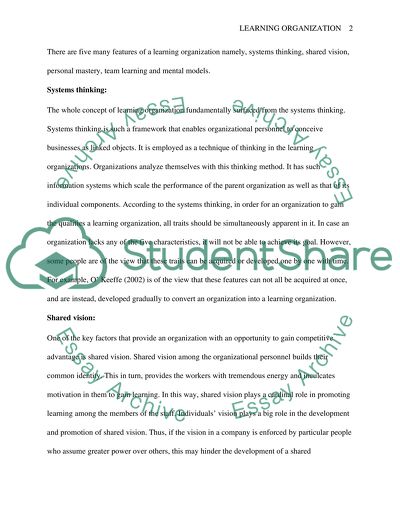Cite this document
(“Learning organisation Essay Example | Topics and Well Written Essays - 1000 words”, n.d.)
Retrieved from https://studentshare.org/education/1408272-learning-organisation
Retrieved from https://studentshare.org/education/1408272-learning-organisation
(Learning Organisation Essay Example | Topics and Well Written Essays - 1000 Words)
https://studentshare.org/education/1408272-learning-organisation.
https://studentshare.org/education/1408272-learning-organisation.
“Learning Organisation Essay Example | Topics and Well Written Essays - 1000 Words”, n.d. https://studentshare.org/education/1408272-learning-organisation.


